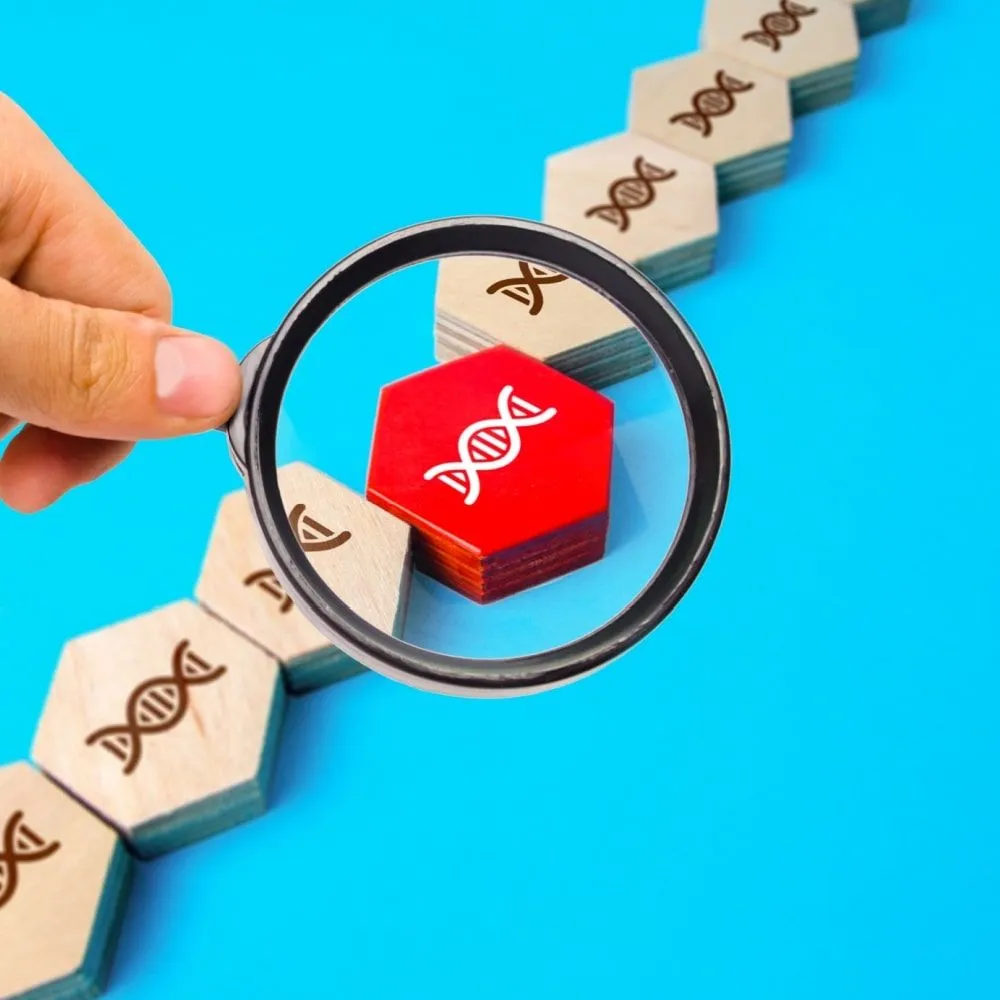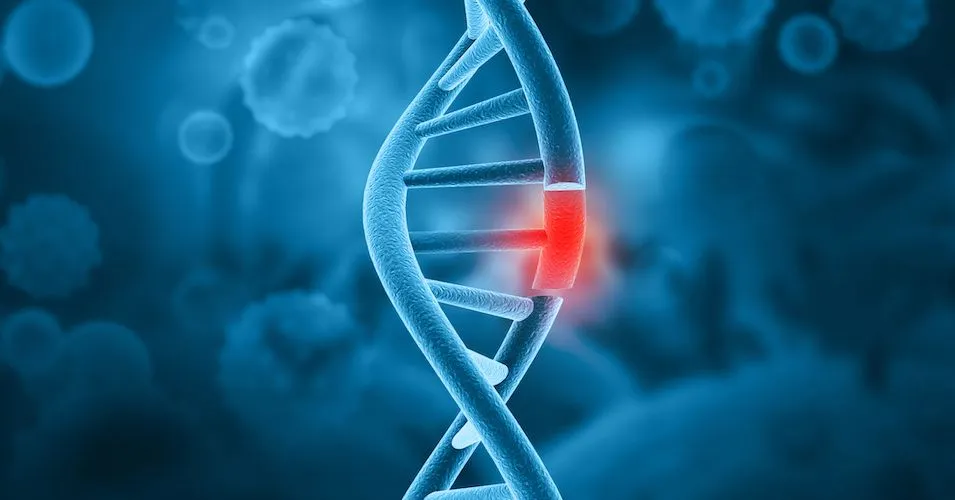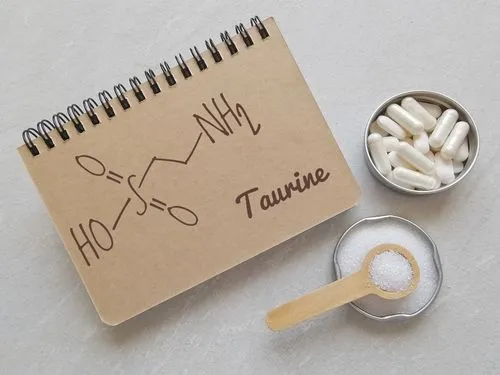What Are The AML Types, and How Are They Classified?

Acute myeloid leukemia (AML) accounts for approximately 80% of adult leukemia cases. It is characterized by the overproduction of immature “blast cells” in the peripheral blood and bone marrow, resulting in ineffective blood cell production and bone marrow failure.
What’s the Role of Genetics in AML?
AML isn't a singular disease but encompasses various subtypes influenced by particular genetic abnormalities. Specific tests like FISH, cytogenetic testing, and next-generation sequencing pinpoint your AML type, revealing chromosomal changes and genetic mutations that cause AML growth.
Knowing your AML-specific genetics significantly impacts treatment decisions. AML specialists tailor treatments based on subtypes, which enhances personalized care.
How is AML Classified?
In the past, the French-American-British system classified AML into eight subtypes, M0 to M7, based on how the cells looked under the microscope.
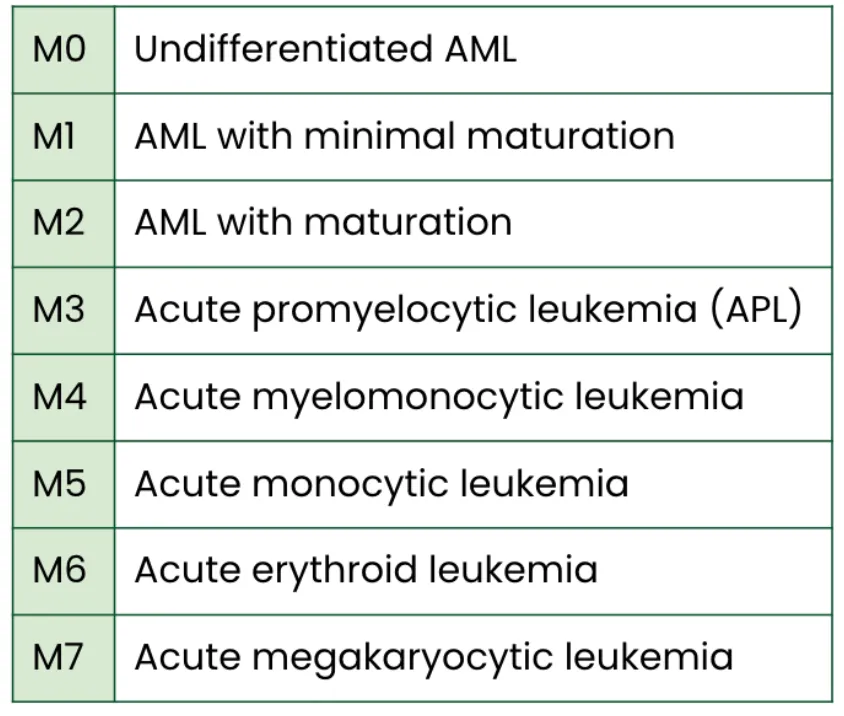
WHO classification for AML
In 2016, the WHO classification was developed to consider genetics and the origin of AML. Using both classifications can help doctors see the whole picture of AML individualities and strategize the best treatment options.

1. AML with Genetic Abnormalities
AML is known by physicians for having many different mutations, and the genetic mapping is usually complex. This classification includes specific types of chromosomal changes and mutations, such as:
RUNX1, KMT2A, MECOM, CBFB-MYH11 fusion, DEK-NUP214 fusion, RBM15-MRTFA fusion, BCR-ABL1 fusion, NUP98, NPM1 and CEBPA
2. AML with Myelodysplasia-Related Features
No prior chemotherapy or radiation to treat a solid tumor or different cancer type. Commonly seen in older patients, characterized by abnormalities in tissue cells and high blast percentages. Occurring in patients with a prior history of:
- Myelodysplastic syndrome (MDS)
- Myelodysplastic or myeloproliferative neoplasms (MDS/MPN)
3. Treatment-Related AML
Linked to prior chemotherapy or radiation exposure, Approximately 10% of all AML cases arise after a patient's exposure to chemotherapy and/or radiation for a primary cancer or autoimmune disease. Some agents linked to this type of AML are:
- Alkylating agents
- Antimetabolites
- Antitubulin
- Topoisomerase II inhibitors: these drugs inhibit a group of enzymes called Topoisomerase II which regulate the DNA’s structure
- Intercalating agents: are substances that insert themselves into a cell's DNA structure and bind to the DNA, causing damage
4. AML, not otherwise specified
Cases of AML that are not classified into any of the other categories are classified as AML, not otherwise specified. This category classifies AML based on how cells look in the microscope, cell chemistry, and antibodies expressed by leukemia cells.
5. Myeloid Sarcoma
A solid tumor of abnormal, immature bone marrow cells (blasts) occurs outside the bone marrow. It’s equivalent to a diagnosis of AML and can anticipate or overlap with it.
6. Myeloid Proliferations Associated with Down Syndrome
Patients with Down syndrome have an increased risk of leukemia due to the abnormal bone marrow cell production associated with the genetic abnormalities of Down syndrome. Most cases linked to Down syndrome are acute megakaryoblastic leukemia.
This category includes transient abnormal myelopoiesis (TAM), a disorder of newborns with Down syndrome. It presents with AML findings 3 to 7 days after birth. Most newborns have spontaneous remission, but others develop AML after 1 to 3 years.
Most cases linked to Down syndrome are acute megakaryoblastic leukemia.
In Down syndrome, there are distinctive genetic abnormalities, like trisomy 21; an extra arm in chromosome 21. Additionally, mutations of gene GATA1 are characteristic of AML associated with Down syndrome.
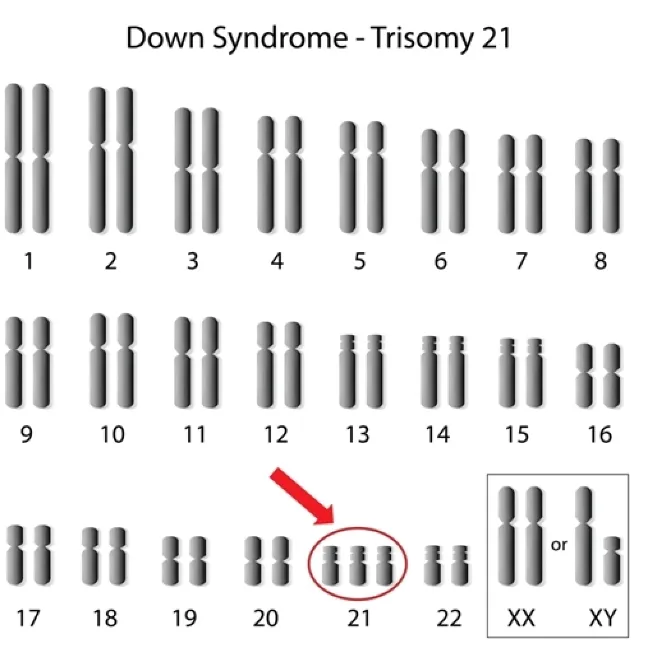
What Are the AML Subtypes?
Mutations are important in AML because they can control AML aggressiveness and treatment response and dictate prognoses and treatment approaches. However, more factors determine AML subtypes:
- How developed the leukemia cells are at the time of diagnosis
- The kinds of proteins present on the surface of the leukemia cells
- How different the leukemia cells appear to be when compared to normal cells
- The type of genetic abnormality the leukemia cells present
Based on the WHO classification, there are more subtypes for two specific AML categories:
- AML with recurrent genetic abnormalities has eleven subtypes
- Not otherwise specified (NOS) AML has seven subtypes
Based on the origin of the AML, it can be categorized into:
- De novo AML means there is no history of other bone marrow abnormalities or cancers before diagnosis and no apparent risk factors that could explain the appearance of AML
- Secondary AML (s-AML), which evolves from prior bone marrow or blood cancers
- Therapy-related AML (t-AML) following exposure to chemotherapy drugs, radiation therapy, or toxins such as benzene.
Understanding your AML type and classification will allow you to look for updates, learn about your disease course, and, alongside your AML specialist, create strategies that improve treatment outcomes.
If you are interested in comprehensive AML 101 articles, locating an AML specialist, or staying informed about updates on AML with a biweekly newsletter, you can create a free HealthTree Cure Hub account, a platform that powers life-saving research!
Sources
- https://www.ncbi.nlm.nih.gov/pmc/articles/PMC7386892/
- https://www.ncbi.nlm.nih.gov/books/NBK507875/
- https://emedicine.medscape.com/article/2006750-overview
Acute myeloid leukemia (AML) accounts for approximately 80% of adult leukemia cases. It is characterized by the overproduction of immature “blast cells” in the peripheral blood and bone marrow, resulting in ineffective blood cell production and bone marrow failure.
What’s the Role of Genetics in AML?
AML isn't a singular disease but encompasses various subtypes influenced by particular genetic abnormalities. Specific tests like FISH, cytogenetic testing, and next-generation sequencing pinpoint your AML type, revealing chromosomal changes and genetic mutations that cause AML growth.
Knowing your AML-specific genetics significantly impacts treatment decisions. AML specialists tailor treatments based on subtypes, which enhances personalized care.
How is AML Classified?
In the past, the French-American-British system classified AML into eight subtypes, M0 to M7, based on how the cells looked under the microscope.

WHO classification for AML
In 2016, the WHO classification was developed to consider genetics and the origin of AML. Using both classifications can help doctors see the whole picture of AML individualities and strategize the best treatment options.

1. AML with Genetic Abnormalities
AML is known by physicians for having many different mutations, and the genetic mapping is usually complex. This classification includes specific types of chromosomal changes and mutations, such as:
RUNX1, KMT2A, MECOM, CBFB-MYH11 fusion, DEK-NUP214 fusion, RBM15-MRTFA fusion, BCR-ABL1 fusion, NUP98, NPM1 and CEBPA
2. AML with Myelodysplasia-Related Features
No prior chemotherapy or radiation to treat a solid tumor or different cancer type. Commonly seen in older patients, characterized by abnormalities in tissue cells and high blast percentages. Occurring in patients with a prior history of:
- Myelodysplastic syndrome (MDS)
- Myelodysplastic or myeloproliferative neoplasms (MDS/MPN)
3. Treatment-Related AML
Linked to prior chemotherapy or radiation exposure, Approximately 10% of all AML cases arise after a patient's exposure to chemotherapy and/or radiation for a primary cancer or autoimmune disease. Some agents linked to this type of AML are:
- Alkylating agents
- Antimetabolites
- Antitubulin
- Topoisomerase II inhibitors: these drugs inhibit a group of enzymes called Topoisomerase II which regulate the DNA’s structure
- Intercalating agents: are substances that insert themselves into a cell's DNA structure and bind to the DNA, causing damage
4. AML, not otherwise specified
Cases of AML that are not classified into any of the other categories are classified as AML, not otherwise specified. This category classifies AML based on how cells look in the microscope, cell chemistry, and antibodies expressed by leukemia cells.
5. Myeloid Sarcoma
A solid tumor of abnormal, immature bone marrow cells (blasts) occurs outside the bone marrow. It’s equivalent to a diagnosis of AML and can anticipate or overlap with it.
6. Myeloid Proliferations Associated with Down Syndrome
Patients with Down syndrome have an increased risk of leukemia due to the abnormal bone marrow cell production associated with the genetic abnormalities of Down syndrome. Most cases linked to Down syndrome are acute megakaryoblastic leukemia.
This category includes transient abnormal myelopoiesis (TAM), a disorder of newborns with Down syndrome. It presents with AML findings 3 to 7 days after birth. Most newborns have spontaneous remission, but others develop AML after 1 to 3 years.
Most cases linked to Down syndrome are acute megakaryoblastic leukemia.
In Down syndrome, there are distinctive genetic abnormalities, like trisomy 21; an extra arm in chromosome 21. Additionally, mutations of gene GATA1 are characteristic of AML associated with Down syndrome.

What Are the AML Subtypes?
Mutations are important in AML because they can control AML aggressiveness and treatment response and dictate prognoses and treatment approaches. However, more factors determine AML subtypes:
- How developed the leukemia cells are at the time of diagnosis
- The kinds of proteins present on the surface of the leukemia cells
- How different the leukemia cells appear to be when compared to normal cells
- The type of genetic abnormality the leukemia cells present
Based on the WHO classification, there are more subtypes for two specific AML categories:
- AML with recurrent genetic abnormalities has eleven subtypes
- Not otherwise specified (NOS) AML has seven subtypes
Based on the origin of the AML, it can be categorized into:
- De novo AML means there is no history of other bone marrow abnormalities or cancers before diagnosis and no apparent risk factors that could explain the appearance of AML
- Secondary AML (s-AML), which evolves from prior bone marrow or blood cancers
- Therapy-related AML (t-AML) following exposure to chemotherapy drugs, radiation therapy, or toxins such as benzene.
Understanding your AML type and classification will allow you to look for updates, learn about your disease course, and, alongside your AML specialist, create strategies that improve treatment outcomes.
If you are interested in comprehensive AML 101 articles, locating an AML specialist, or staying informed about updates on AML with a biweekly newsletter, you can create a free HealthTree Cure Hub account, a platform that powers life-saving research!
Sources
- https://www.ncbi.nlm.nih.gov/pmc/articles/PMC7386892/
- https://www.ncbi.nlm.nih.gov/books/NBK507875/
- https://emedicine.medscape.com/article/2006750-overview

about the author
Jimena Vicencio
Jimena is an International Medical Graduate and a member of the HealthTree Writing team. She has a passion for languages and is currently learning Japanese. In her free time, she loves playing with her cats. Jimena is also pursuing a bachelor's degree in journalism.
More on Core Education
Get the Latest Leukemia Updates, Delivered to You.
By subscribing to the HealthTree newsletter, you'll receive the latest research, treatment updates, and expert insights to help you navigate your health.



